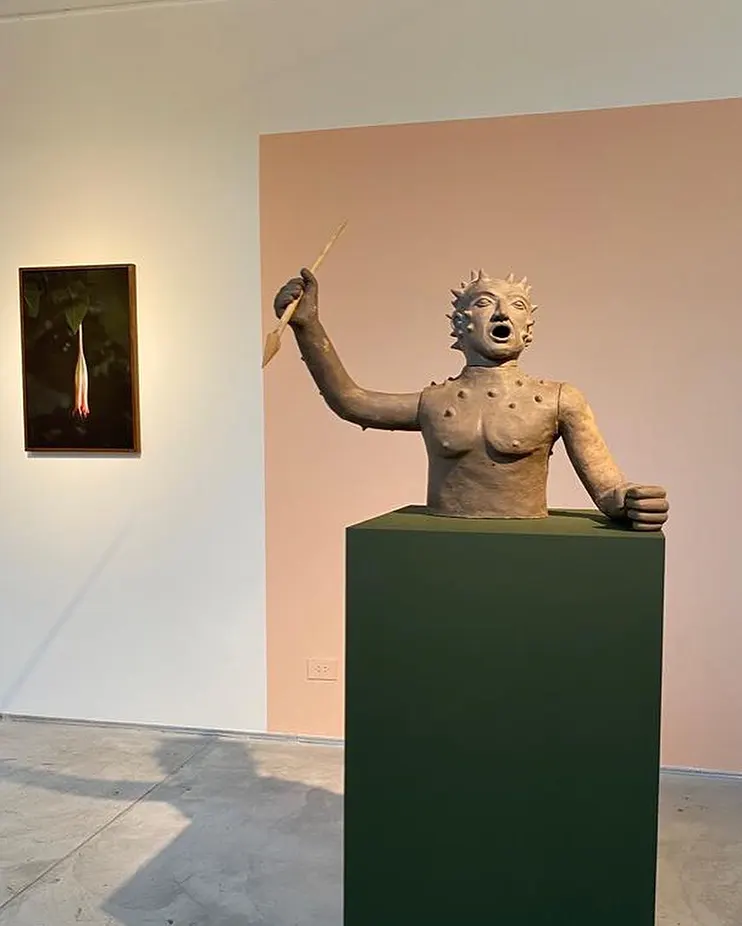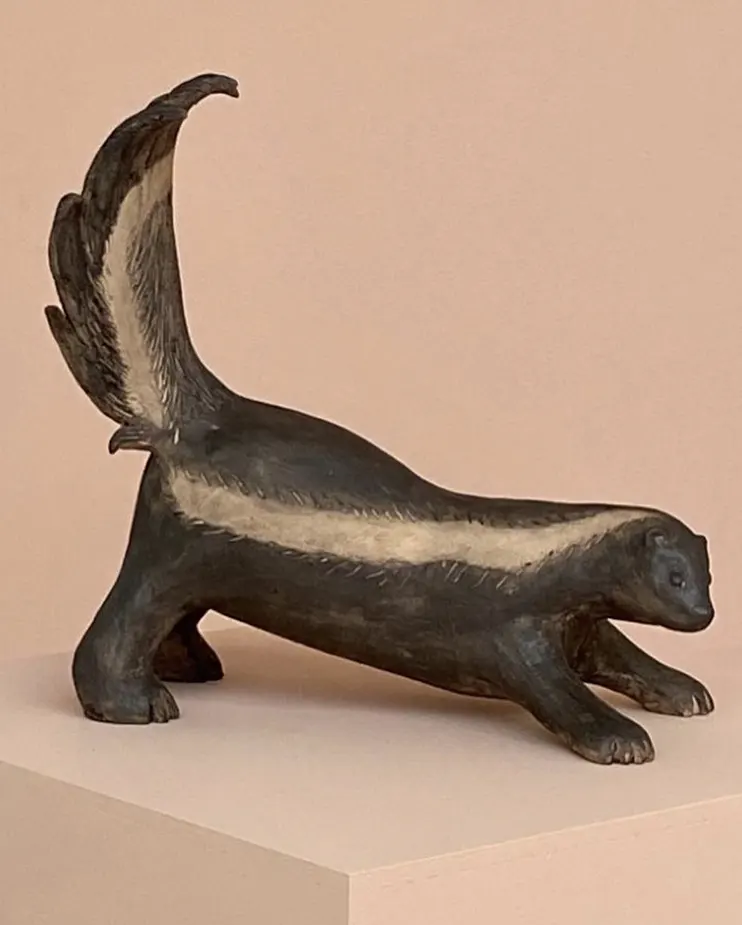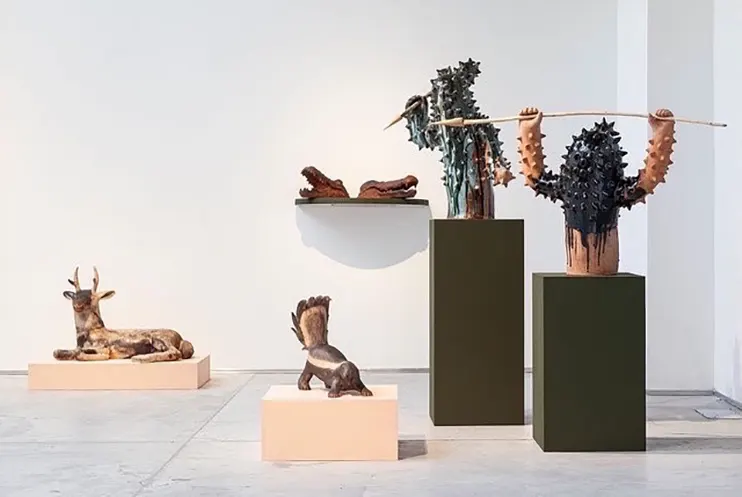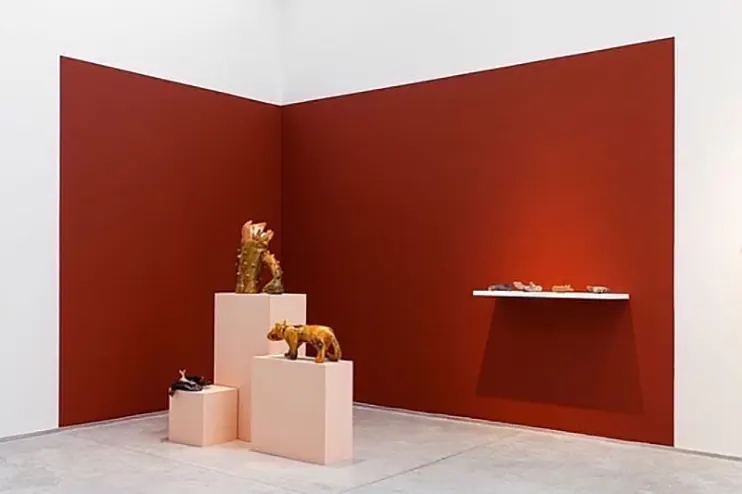ODA
Portada » EXHIBITIONS / ODA
NATURALEZA SAGRADA AÑO: 2022
Sacred Nature
The forest has ears and the fields have eyes.
John Heywood
Ángela and Desirée. The names seem to come from a fairytale. If that was the case, the first scene would be the lovely breadth of a garden, possible domesticity the of the unknown that translates into the work of the resolute ant. A devotional dialogue with the marvels that grows slowly and imperceptibly.
The second scene, a Pampa where the limitless horizon reveals the last hiding place, where the plant life festively screams to the beat of scourging cicadas and the clay, bloody and viscous, raises in the chronicle of an announced death.
Angela and Desirée write their own tales. In the middle, there is an episode
where the stories cross. In this exhibition. A chapter, a crossroads. A pause on the road.
But before this reunion, it was Angela and Desirée. Each on their own.
********
Ángela. From how many repetitions is a landscape made? The identity of a
trunk, of a leaf, a limb, adjusts its voice to the context, it camouflages in the harmonic effect, alternating between light and dark. The way this nature advances is the way
of tapestry, which shudders at knowing itself an interval, a parenthesis. There are landscapes that only exist as secret gardens.
Angela’s eye is adaptable, respectful. It detects the exact place where wild nature becomes a nook, constructed space of latencies. There the landscape is a cover, is a coat. Dry green murmurs, olive, fern green, emerald, light green, which embrace
in an extension that sooths and lulls. Every once in a while, we are shocked by a silky violet red or a bright rose, the quick lapse of a flower. Fleeting intromission, and we go back to the kingdom of the fluffy, the repetitive.
In her poem, Diana Bellessi says: The garden demands to its gardener to watch it die. /Demands her hand to cut and modify/ the naked earth, turned around in the stonemasons/ under the cold night. The garden kills and asks to be killed to be a garden. Angela also knows about cycles, of pruning and trimming, of ends and beginnings. The seasons happen in the garden of her house. She parallels the invincible force of nature, which turns shapes and color without hurry and without pause, to a work meticulous and stubborn of capturing, gathering and collaging. As a photographer, Angela does gardening.
*********
Desirée. One crocodile. One cougar. Two capybaras. One heron. One deer. One
skunk. One crocodile. One black eggplant bird. One black lava bird. One rooster. One small mule. One frog. To take inventory is to put order, make a list of the treasures that belong to something or someone. What about the beings on this inventory, who do they belong to? Who takes care of them? Who uses them? Where and how do you write down the missing ones. Do they survive the exodus changes? Who decided on their names? In an inventory, things are not born and die in material terms, sensitively, they are only born in the nomenclature to register origin and ownership. To die is to stop being a part of the inventory. That way, the human in its role of owner, boss, sketches its lists, writes down its possessions, and knows itself powerful over its domain. In Desirée’s tale, the animals cackle contradictions, croak to the master and lord. Menacing without losing their congeniality, stumble in their glazed or smoked beauty moving upright, break the imposed inventory and organize in a different way. The new order of a motley army, multi-species and vengeful.
The tale is the teaching form of fiction. The beings modeled by Desirée warn us that there are other alliances possible for survival. The wound is vital texture. The armor is made from fire and smoke.
*********
Ángela and Desirée. Then they got together. Ángela’s Eden, and the empathic
fauna of Desirée. The morning prayer in the solitude of a silent garden and the ululation of the fields, the eco of a nocturnal croak. The muting in front of the flora’s mysterious language and the ancestral war cry. The romantic and the wild nature. The modern nature and the nature of the revisionist estancia. The poetry of the botanical inventory, with its exotic cadenced names and the animals that escaped the human inventory to live their own heroic deeds. Both universes pursue the idea of cover, wound, fold, both point to different advance strategies, between the contemplative and the proactive impetus over a territory where is necessary to reclaim the notion of sacredness to protect it.
In “Modern Nature” the meticulous dairy of Derek Jarman about the construction of his garden, an anti-natural Eden cultivated in a desert of stone, the arid coastal area of cape Dungeness in the South of England, the adverse conditions multiply the dedication of a gardener that completely assumes a non-idyllic concept of nature. To a nature understood as atavistic and unprecedented, Jarman juxtaposes the concrete and material experience. There is struggle, there is consciousness, there is respect. The surroundings offer new challenges daily to the human project, and the beauty is the result of a constant friction plagued with disagreements. Between observation and work, the garden grows, the material does what it knows to do, man is also a material in this garden. Ángela and Desirée know this. They observe, work, manipulate the material to obtain internal resonances that will come back to us in the form of images. A wisdom that the art’s army has provided for centuries.
Verónica Gómez
Translation to English by Giannina Dwin





